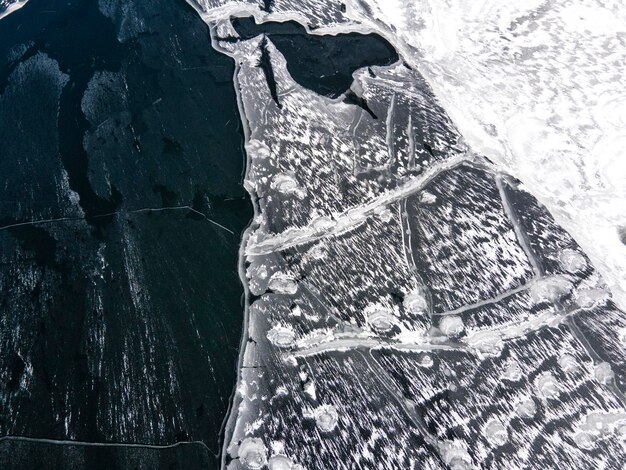Unlocking the Secrets: A Guide to Historical Map Primary Sources

Unlocking the secrets of historical maps involves understanding cartographic primary sources, providing invaluable insights into past societies, landscapes, and geopolitical contexts, revealing stories etched in lines, symbols, and annotations.
Have you ever held a map and wondered about the stories it could tell? Unlocking the secrets of historical maps: A guide to cartographic primary sources opens a window to the past, revealing how these documents reflect the knowledge, beliefs, and ambitions of the societies that created them.
Understanding Historical Maps as Primary Sources
Historical maps are much more than just navigational tools; they are primary sources that offer a unique perspective on the history, culture, and geography of a particular time. These maps reflect not only the physical world as it was understood but also the social, political, and economic contexts of their creation.
By analyzing these maps, we can uncover valuable information about past settlements, trade routes, territorial claims, and even the prevailing worldviews of different eras. Understanding their significance as primary sources is key to truly unlocking the secrets of historical maps.
What Defines a Cartographic Primary Source?
A cartographic primary source is a map created during the time period it depicts, offering firsthand information about the geographical knowledge, artistic styles, and cultural biases of that era. These sources provide direct evidence about the past, without the influence of later interpretations or analyses.
Unlike secondary sources, which interpret or summarize information from primary sources, cartographic primary sources allow historians to engage directly with the perspectives and understandings of people from the past. They serve as invaluable tools for researchers seeking to understand the world through the eyes of those who lived in it.
- Originality: The map must be an original artifact from the period under study.
- Context: Understanding the map’s creation, purpose, and intended audience.
- Authenticity: Verifying the map’s age and provenance.

Key Elements to Analyze in Historical Maps
When examining a historical map, several key elements can provide insights into its origins and the information it conveys. These elements range from the materials used to create the map to the symbols and annotations included by the cartographer. A thorough analysis of these components can reveal the map’s purpose, biases, and its role in shaping historical narratives.
By focusing on these aspects, researchers and enthusiasts can effectively unlock the secrets of historical maps, gaining a deeper understanding of the world as it was perceived in the past.
Map Projections and Accuracy
Map projections are methods used to represent the three-dimensional surface of the Earth on a two-dimensional plane. Different projections distort the Earth’s surface in various ways, affecting the accuracy of distances, areas, and shapes. Analyzing the projection used in a historical map can reveal the cartographer’s priorities and the intended use of the map.
For example, some projections preserve the shapes of continents and countries, while others maintain accurate area representations. Understanding these distortions is essential for interpreting the information presented on the map and assessing its reliability.
Symbols, Legends, and Decorative Elements
Historical maps often include a variety of symbols, legends, and decorative elements that provide valuable information about the features depicted and the cultural context of the map. Symbols may represent cities, mountains, rivers, and other geographical features, while legends explain the meaning of these symbols.
Decorative elements, such as compass roses, cartouches, and illustrations of mythical creatures, can reflect the artistic styles and cultural beliefs of the time. These elements add visual appeal to the map and can also convey symbolic meanings or political messages.
- Symbols: Identifying and interpreting the symbols used to represent different features.
- Legends: Understanding the explanations of map symbols and abbreviations.
- Decorative Elements: Analyzing the artistic and cultural significance of decorative features.
Tools and Techniques for Studying Old Maps
Studying old maps requires a combination of historical knowledge, cartographic expertise, and technical skills. Researchers can use a variety of tools and techniques to analyze and interpret these documents, uncovering hidden details and gaining a deeper understanding of their historical context.
These tools range from digital imaging software to traditional archival methods, each offering unique advantages for unlocking the secrets of historical maps. Combining these approaches can provide a comprehensive and nuanced understanding of these valuable primary sources.
Digital Imaging and Enhancement
Digital imaging and enhancement techniques can be used to improve the readability of old maps, revealing details that may be obscured by age or damage. High-resolution scanning allows researchers to create digital copies of maps, which can then be manipulated using image editing software.
These tools can be used to adjust the contrast, brightness, and color balance of the image, making it easier to read faded text and identify subtle features. Digital enhancement can also be used to remove stains, repair tears, and correct distortions, preserving the map’s information for future generations.
Archival Research and Contextual Analysis
Archival research involves examining historical documents, records, and other primary sources that provide context for the creation and use of a map. This research can reveal the cartographer’s motivations, the intended audience for the map, and the political or economic factors that influenced its design.
Contextual analysis involves placing the map within its historical, social, and cultural context, considering the prevailing worldviews and knowledge of the time. By combining archival research with contextual analysis, researchers can gain a deeper understanding of the map’s significance and its role in shaping historical events.
- Archival Research: Locating and examining related documents and records.
- Contextual Analysis: Placing the map within its historical, social, and cultural context.
- Comparative Analysis: Comparing the map to other maps from the same period to identify similarities and differences.

Case Studies: Unlocking History Through Maps
Examining specific historical maps and the insights they provide can illustrate the power of cartographic primary sources for understanding the past. Real-world examples demonstrate how careful analysis can reveal hidden narratives and challenge traditional historical interpretations. Studying these case studies will deepen your understanding and skills in unlocking the secrets of historical maps.
These maps not only depict places but also reflect the cultural, political, and economic forces that shaped them. By exploring these examples, we can appreciate the richness and complexity of historical cartography.
Mapping the American West
Historical maps of the American West offer a fascinating glimpse into the exploration, settlement, and transformation of this vast region. These maps document the routes of explorers, the locations of indigenous settlements, and the boundaries of territorial claims.
Analyzing these maps can reveal the westward expansion of the United States, the displacement of Native American tribes, and the impact of resource extraction on the environment. They also show the evolving understanding of the region’s geography and resources, reflecting the changing priorities and values of the people who created them.
Maps of Colonial Africa
Maps of colonial Africa provide insights into the European powers’ ambitions, strategies, and perceptions of the continent. These maps often reflect the colonial powers’ desire to control trade routes, exploit resources, and establish political dominance.
Studying these maps can reveal the arbitrary boundaries drawn by colonial powers, the impact of colonialism on African societies, and the resistance movements that challenged colonial rule. They also reflect the limited knowledge and cultural biases of the European cartographers, offering a glimpse into the colonial mindset.
- Territorial Claims: Examining how different colonial powers demarcated their spheres of influence.
- Resource Depiction: Analyzing the representation of natural resources and economic activities.
- Indigenous Representation: Investigating how indigenous populations were depicted and characterized.
Preserving and Accessing Historical Maps
Ensuring the long-term preservation of historical maps is essential for future generations of researchers and enthusiasts. These fragile documents are vulnerable to damage from light, humidity, and handling, requiring careful conservation and storage techniques. This will lead to further opportunities for unlocking the secrets of historical maps.
In addition to preservation, providing access to these maps through digital archives and online resources is crucial for promoting their study and appreciation. By combining preservation efforts with increased accessibility, we can ensure that these valuable primary sources continue to inform and inspire.
Conservation Techniques
Conservation techniques involve the use of specialized materials and procedures to stabilize and repair damaged maps. These techniques may include cleaning, deacidification, and encapsulation, depending on the condition of the map.
Conservation efforts aim to prevent further deterioration and extend the lifespan of the map, while preserving its historical integrity. Professional conservators carefully document their work and use reversible methods, ensuring that future treatments can be performed without causing additional damage.
Digital Archives and Online Resources
Digital archives and online resources provide access to historical maps for researchers and enthusiasts around the world. These resources often include high-resolution images, metadata, and transcriptions, allowing users to search, browse, and analyze maps from their own computers.
Digital archives also offer virtual exhibits and educational materials, promoting the study and appreciation of historical cartography. By making maps more accessible, these resources foster a greater understanding of the past and encourage new discoveries.
- Digitization Standards: Ensuring high-quality images and accurate metadata.
- Online Platforms: Creating user-friendly interfaces and search tools.
- Educational Resources: Developing virtual exhibits, lesson plans, and scholarly articles.
Ethical Considerations When Working with Historical Maps
When working with historical maps, it’s important to consider the ethical implications of their content and the potential impact of their interpretation. These maps often reflect the biases and perspectives of their creators, and may contain inaccuracies, stereotypes, or offensive depictions.
Researchers and enthusiasts have a responsibility to critically evaluate these maps, acknowledging their limitations and considering the perspectives of marginalized groups. By approaching these sources with sensitivity and awareness, we can promote a more inclusive and nuanced understanding of the past and by acknowledging this, we are truly unlocking the secrets of historical maps.
Acknowledging Biases and Perspectives
Historical maps are not objective representations of the world but rather reflect the biases, perspectives, and priorities of their creators. Cartographers may have been influenced by political agendas, economic interests, or cultural beliefs, which can shape the way they depict places and people.
Researchers should be aware of these biases and consider how they may have influenced the map’s content and interpretation. By acknowledging these limitations, we can avoid perpetuating stereotypes and promote a more critical and nuanced understanding of the past.
Respecting Cultural Heritage
Historical maps often depict places and people that are significant to specific cultural groups. Researchers should be respectful of these cultural connections and avoid using maps in ways that could cause harm or offense.
This may involve consulting with cultural experts, obtaining permission to reproduce sensitive images, and acknowledging the cultural significance of the places and people depicted on the map. By respecting cultural heritage, we can promote a more ethical and responsible approach to the study of historical maps.
| Key Point | Brief Description |
|---|---|
| 🗺️ Understanding Maps | Historical maps as primary sources offer unique insights into past societies. |
| 🧭 Analyzing Elements | Key elements include projections, symbols, and decorative aspects. |
| 🔍 Digital Techniques | Digital imaging enhances readability and reveals obscured details. |
| 📜 Ethical Considerations | Acknowledge biases, respect heritage, and promote inclusivity. |
Frequently Asked Questions
▼
A historical map is considered a primary source when it was created during the time period it depicts, providing firsthand information about the geographical knowledge and cultural context of that era.
▼
Digital imaging enhances readability by improving contrast and clarity, revealing details obscured by age or damage. It also allows for easy sharing and preservation of the map.
▼
Ethical considerations include acknowledging biases, respecting cultural heritage, and avoiding the perpetuation of stereotypes or offensive depictions present in the maps.
▼
Archival research provides historical context for the map’s creation, revealing the cartographer’s motivations, intended audience, and political or economic factors that influenced its design.
▼
Map projections are crucial because they show how the Earth’s surface is represented on a flat plane, affecting accuracy. Understanding projections helps interpret the cartographer’s priorities and the map’s intended use.
Conclusion
By recognizing historical maps as primary sources and employing the right analytical tools, we can unlock a wealth of knowledge about past societies and their interactions with the world. These maps offer valuable insights into history, geography, and culture, providing a unique window into the past.





